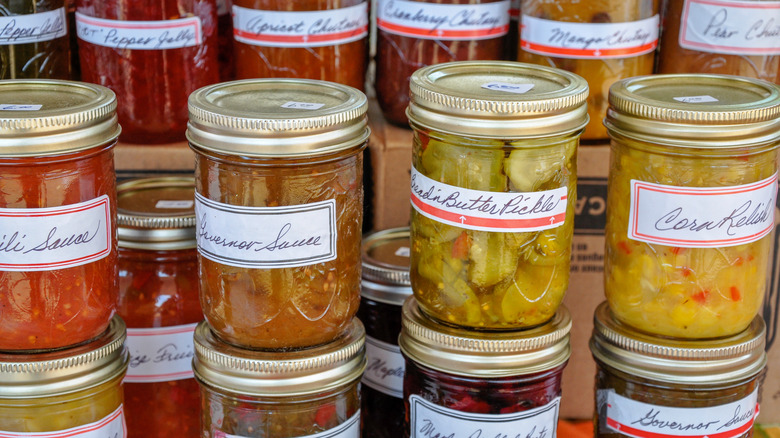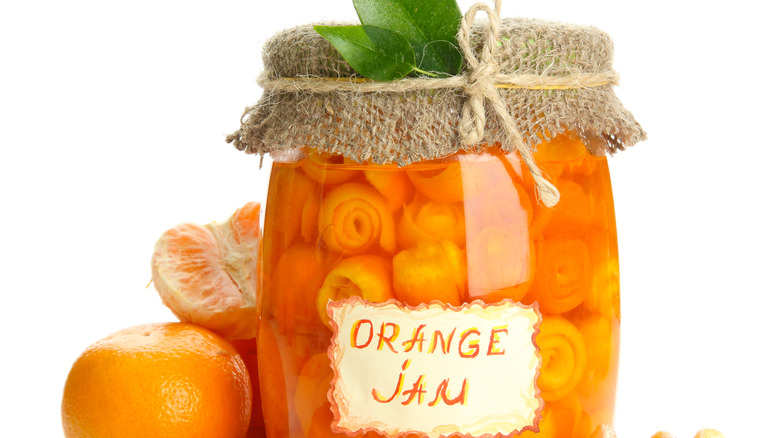The Crucial Information You Should Add To Homemade Canned Food Labels
Home canning is a valuable skill to have and if you've ever done it, then you know there are few things as satisfying as seeing your pantry shelves lined with glass jars of foods you've put there yourself. Canning is a great method of preservation and if you have a substantial harvest of peppers, cucumbers, or even fruit, you can almost count on having enough produce to end up with several rounds of canning to use up all of your bounty.
Although you may think you'll always know what's inside the jar by looking at it, and that may be true, you may not remember the date you canned the items. That's why it's important to label the jars. As Healthy Canning details, the task of labeling can vary from person to person, with some viewing it as allowing their artistic side to flourish to yet another chore related to canning.
Incorporate a batch number
Labeling is important, but it's one of the final steps in the canning process. First, the jars need to cool for up to 24 hours, per Eating Well. And as Alpha Foodie details, while the jars cool you may hear them pop, which is an indication they have sealed. The next step is to label the jars with the contents and date it was processed. But incorporating one further detail can help you in the future.
As detailed by the Kitchn, incorporating a batch number on the jar lid will make your life easier once you go to use the content of the jars. If there's a problem with one jar in the batch, it's easier to know which jars to monitor for signs of failure or spoilage. Likewise, if you've home canned a successful batch, such as a sweeter portion of jam or a particularly spicy batch of jalapeños, notating the batch on the jars will help you identify that easily.

